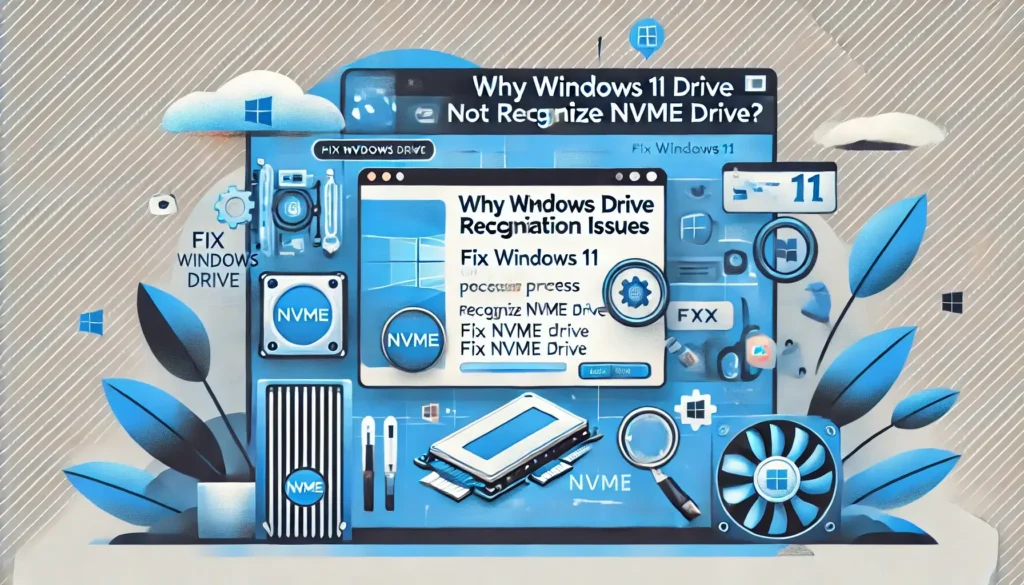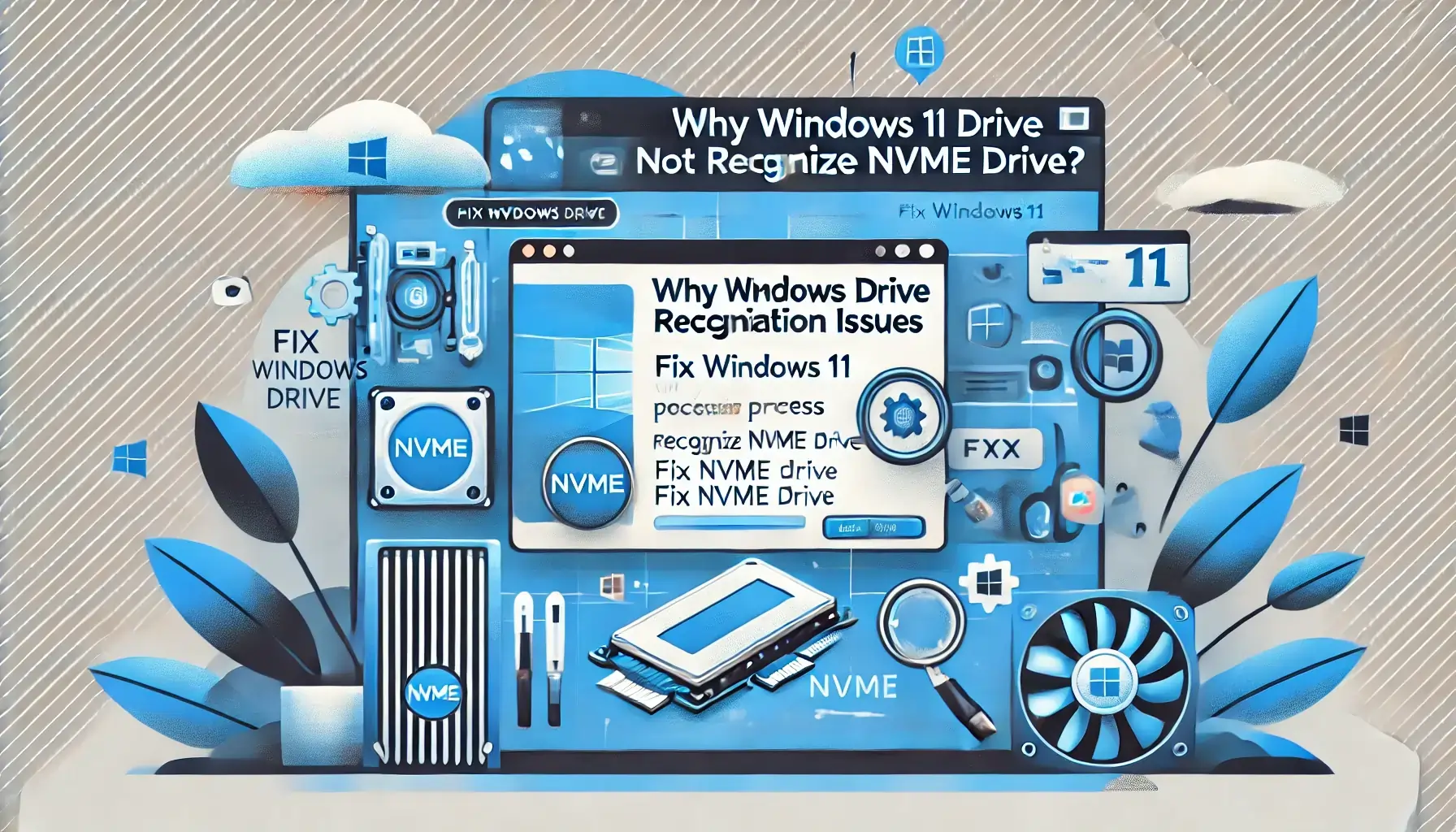If you’re attempting to install Windows 11 and encounter issues with the installation process not recognizing your NVMe drive, you’re not alone. This problem can be frustrating, especially if you’re excited to use the latest operating system. Understanding why this happens and how to resolve it is key to a smooth installation. In this article, I’ll explain the common reasons behind this issue and provide practical solutions.
Common Reasons for NVMe Drive Recognition Issues

1. BIOS/UEFI Settings
The BIOS (Basic Input/Output System) or UEFI (Unified Extensible Firmware Interface) settings on your motherboard play a critical role in recognizing your NVMe drive. If the settings are not configured correctly, Windows 11 may not detect the drive during installation.
2. Driver Compatibility
Windows 11 might not include the necessary drivers for your specific NVMe drive. If the drivers are outdated or not present, the installation process may fail to recognize the drive.
3. Faulty NVMe Drive or Connection
Sometimes, the issue may stem from a hardware problem. A faulty NVMe drive or loose connections can prevent detection. It’s essential to check the physical connection of the drive to the motherboard.
4. Partitioning Issues
If the NVMe drive has existing partitions that are incompatible with the Windows installation, it may not be recognized. This is especially true if the drive was previously used with a different file system or operating system.
5. Secure Boot and CSM Settings
Secure Boot and Compatibility Support Module (CSM) settings in the BIOS/UEFI can also affect drive recognition. If these settings are not configured properly, your NVMe drive might not be detected.
How to Resolve NVMe Drive Recognition Issues
1. Check BIOS/UEFI Settings
- Access BIOS/UEFI: Restart your PC and press the designated key (usually F2, DEL, or ESC) during startup to enter the BIOS/UEFI setup.
- Enable NVMe Support: Look for settings related to NVMe configuration and ensure they are enabled.
- Disable Legacy Support: If you see options for Legacy or CSM, disable them. Windows 11 works best with UEFI mode.
2. Update BIOS/UEFI
An outdated BIOS/UEFI can lead to compatibility issues with NVMe drives. Visit the manufacturer’s website to download and install the latest firmware for your motherboard.
3. Load NVMe Drivers During Installation
If Windows 11 fails to recognize your NVMe drive, you can load the necessary drivers manually during the installation:
- Download the NVMe drivers from the manufacturer’s website and save them to a USB drive.
- Start the Windows 11 installation process.
- When prompted to select a drive for installation, click on Load Driver.
- Browse to the USB drive and select the appropriate NVMe driver.
4. Check Physical Connections
If you suspect a hardware issue, take the following steps:
- Power Off: Shut down your computer and unplug it from the power source.
- Reseat the NVMe Drive: Open your PC case and ensure the NVMe drive is securely connected to the M.2 slot.
- Test the Drive: If possible, test the NVMe drive in another compatible system to rule out hardware failure.
5. Use Disk Management Tools
If your NVMe drive has existing partitions, you may need to format or delete them:
- Boot from the Windows 11 installation media (USB/DVD).
- When you reach the partition selection screen, press Shift + F10 to open a command prompt.
- Type
diskpartand press Enter. - Use the commands
list disk,select disk X(replace X with your disk number), andcleanto remove all partitions. - Exit Diskpart and return to the installation screen. Your NVMe drive should now be recognized.
6. Disable Secure Boot (if necessary)
In some cases, disabling Secure Boot can help:
- Access BIOS/UEFI and look for the Secure Boot option. If it’s enabled, consider disabling it temporarily during the installation.
Conclusion
Encountering a black screen or failing to recognize your NVMe drive during the Windows 11 installation process can be a major roadblock, but with the right steps, you can troubleshoot and resolve the issue. Ensure your BIOS/UEFI settings are configured correctly, update your drivers, and check the physical connections to your NVMe drive. By following these guidelines, you’ll be well on your way to a successful Windows 11 installation.

